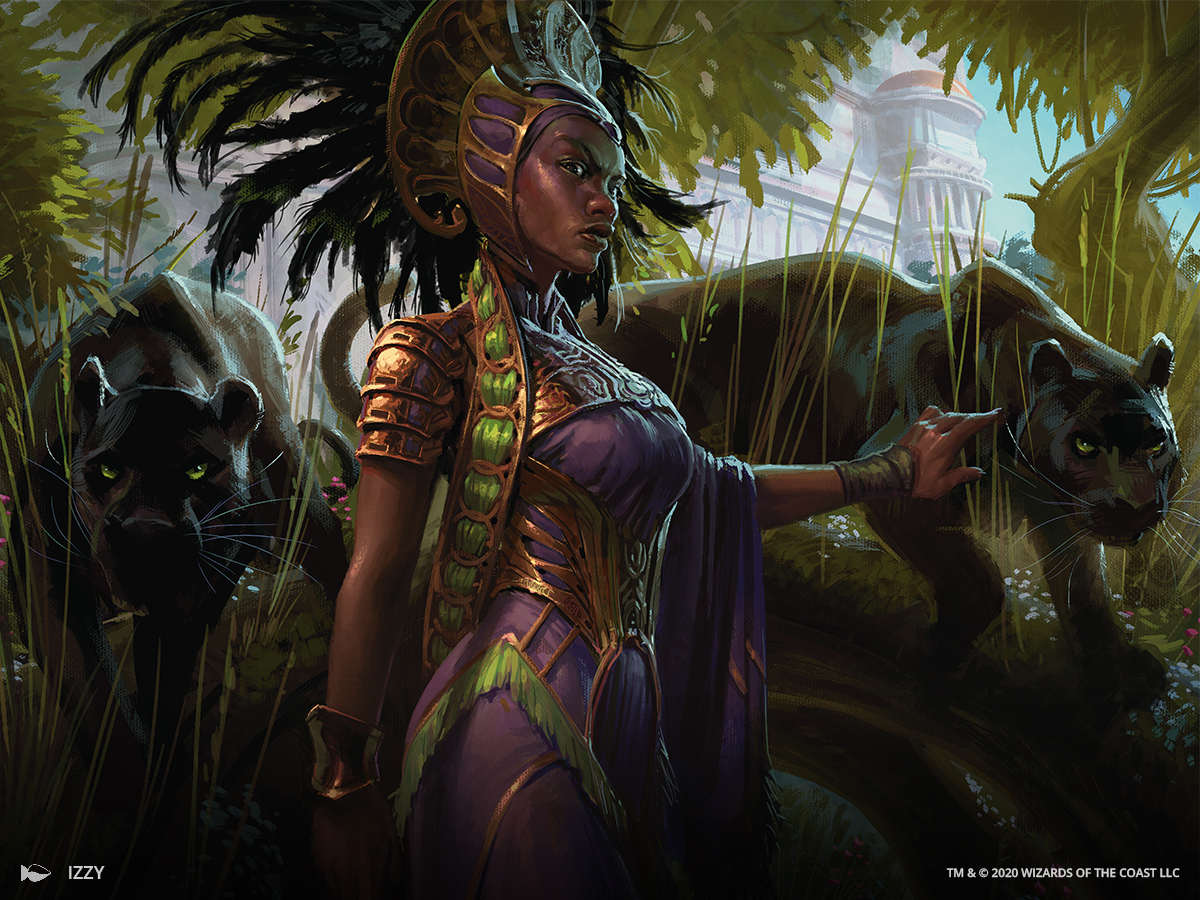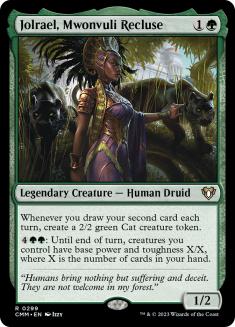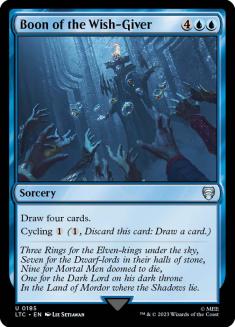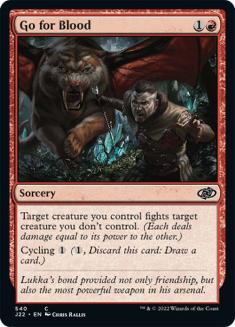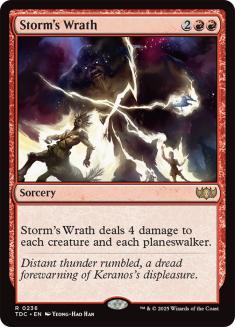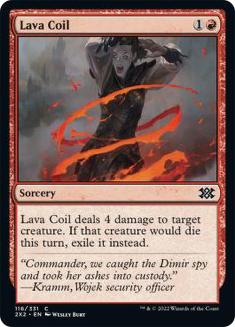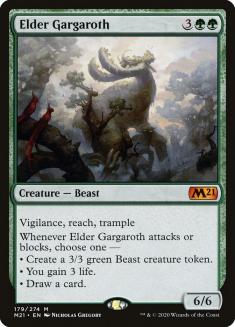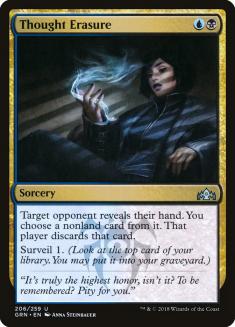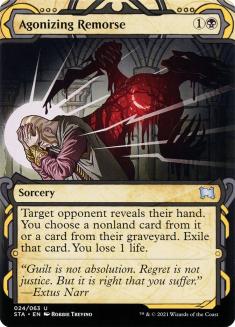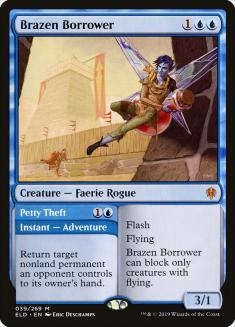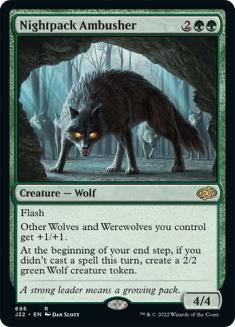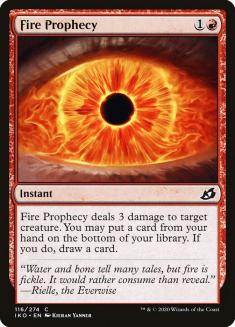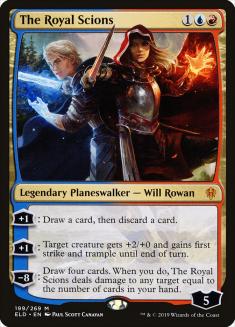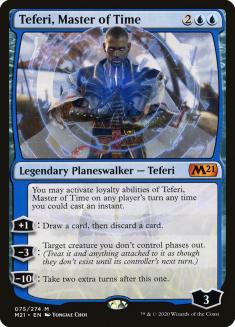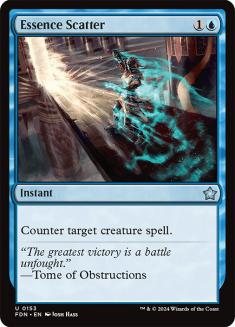This past weekend I battled in SCG Tour Online Championship Qualifier #4 with a strange new brew, brought to me by testing partner Erin Diaz, called Temur Jolrael. It seemed pretty good against Sultai Ramp in the games we played against each other, and made a lot of sense in theory, and frankly was also just a ton of fun to play at a time when I’ve not really been enjoying the top decks in Core Set 2021 Standard, so it was an easy sell to give this deck a shot.
I quickly found myself 3-0 after winning a feature match against underrated and under-known Magic Online (MTGO) grinder Daniel Goetschel, and whilst the wheels came off of my tournament after this point I still landed at a respectable 27th place, whilst the one other pilot of the deck, Erin, got a 5-2 record to end up in 19th. It’s hard not to believe, based on testing, results, and theory, that the deck has real potential, though there’s still some work left to do and things to figure out to find its final form.
Creatures (12)
Planeswalkers (3)
Lands (24)
Spells (21)
Sideboard

The theory that leads to a deck like this follows a pretty clear through-line. Uro, Titan of Nature’s Wrath is the most powerful card in Standard. Nissa, Who Shakes the World is not far behind in power level and tends to work very well in decks that would like to play Uro. You end up naturally wanting to maindeck some number of counterspells like Negate, Aether Gust, and Mystical Dispute in order to be able to keep opposing copies of Nissa and Narset, Parter of Veils under control out of the Sultai Ramp deck, and Shark Typhoons since they play so well with these counterspells. But what are you really doing here that Sultai isn’t?
This is where Jolrael, Mwonvuli Recluse comes in. Having a two-mana threat in a deck like this is huge, as this is something Sultai just doesn’t get access to, changing the dynamic of the games and forcing opponents to begrudgingly keep in removal spells against you in the hope that their Eliminate lines up with your early pressure. Jolrael helps make it possible for you to attack down early Narsets, plays extremely well with counterspells, lets you randomly win games out of nowhere with her activated ability, and on top of that means that, even with really inbred deckbuilding focusing on attacking Sultai Ramp specifically, you can still always just randomly steal Game 1s against aggro if you have that Turn 2 Jolrael draw.
She also naturally synergises with Uro, since it helps her make tokens on curve and refills your hand in the late-game for her activated ability, and even synergises with Nissa too; not only is it trivial to activate Jolrael’s ability with a Nissa on the battlefield, but Nissa’s animated lands get an additional buff in that scenario due to their base power and toughness both being zero, meaning that the +1/+1 counters actually stack on top of whatever size Jolrael renders them.
You may think that enabling Jolrael is still just too much of a deckbuilding cost, even with all these incentives behind her, but Opt and Boon of the Wish-Giver are honestly just good cards. Opt means you can run a lower land count without really being meaningfully punished and helps make your draws more consistent, whilst Boon of the Wish-Giver has massive upside in the late-game, letting you gas back up if the game stalls out and also threatening to allow Jolrael to easily kill people by making your hand huge.
Cards like Go for Blood and Drannith Stinger you very rarely cast, and are largely in your deck as colourless copies of Reach Through Mists. These obviously aren’t exciting cards to have in your deck, but they are surprisingly low-cost, considering they enable Jolrael, allow you to return Uro terrifying quickly and repeatedly, and also just mean you draw your best cards more often by playing a virtually smaller deck. I played Drannith Stinger partially because it was also Scavenging Ooze food, but honestly that comes up incredibly rarely and you hard-cast Go for Blood a bit more often, so I would likely just play that card instead in the future if I ever wanted to play this density of cyclers again.
And just like that we’re already at 60 cards. Clearly the way this deck is built is not really putting much effort into beating aggressive strategies in the maindeck, and for as long as Sultai Ramp puts up these absurd metagame percentages I can’t imagine not wanting your deck to be largely pre-sideboarded for that matchup. Fortunately Uro is so unbelievable that even if you somehow lost every single Game 1 against aggro, which you won’t as Jolrael and Uro will still steal a fair few games for you here and there, the pile of removal spells and sweepers in your sideboard means you should be able to take the match a good proportion of the time regardless. Don’t be surprised to find yourself sideboarding in nearly your whole sideboard against Mono-Green or Mono-Red Aggro with this in mind.
This is how this initial version of the deck was reached. To talk about how to develop it to improve it even further against Sultai Ramp, we have to talk about Nissa. Simic-based Nissa shells have some pretty obnoxious mirror matches and painful holding patterns by nature. This is because Nissa is inherently hard to resolve in the face of Negate, Aether Gust, and Disdainful Stroke as a five-mana sorcery speed spell, yet tends to functionally end the game should you resolve her first, partially because her high loyalty count and the absurd amount of pressure she generates makes it hard to deal with everything she presents at once and partially because the crushing mana advantage you gain makes it hard for your opponent to resolve a Nissa of their own or, well, really do anything meaningful.
This creates some pretty horrendous gameplay as neither player wants to cast their Nissa into opposing counterspells, because the first player who does will likely get their Nissa countered and then lose to the opposing follow-up Nissa. Building Simic-based Nissa decks has therefore been largely about finding ways to break through this. Bant Ramp was the best Nissa deck previously because if you resolved Teferi, Time Raveler and kept him on the battlefield you then could resolve a Nissa in peace soon after. Sultai Ramp is the best Nissa deck now because discard spells like Thought Erasure and Agonizing Remorse let you either take your opponent’s single counterspell, ensuring your Nissa can resolve, or take their single Nissa so that they can’t meaningfully punish you for tapping out for haymakers into their interaction.
Jolrael essentially seeks to get us some way towards breaking up these holding patterns in a different manner, as hopefully your stream of tokens will be enough to force your opponent to make the first move, and even in the mid-game it’s relatively easy to resolve a two-mana threat like this whilst still holding open counterspells of your own. I’ve been happy enough with the Sultai Ramp matchup as a result, but considering its popularity I want to make the matchup even better.
Creatures (10)
- 1 Scavenging Ooze
- 1 Nightpack Ambusher
- 1 Brazen Borrower
- 4 Uro, Titan of Nature's Wrath
- 3 Jolrael, Mwonvuli Recluse
Planeswalkers (3)
Lands (24)
Spells (23)
Sideboard

This is the list I played on stream most recently after tossing ideas back and forth with Erin, him then suggesting I give this update a try, and whilst I don’t expect this to be the final version of the deck, I have been very happy with the changes so far.
Trimming on the fourth Jolrael may look awkward considering she is so much what the deck is built around, but I’ve had so many games by this point where the first copy lives and redundant copies end up stuck in hand when literally anything that draws cards would have been incredible; you’re pretty good at drawing into a Jolrael anyway with so many cantrips, and even a Jolrael cast on Turn 5 or 6 can have the potential to take over games, so it’s not like you need the card in every opening hand.
Meanwhile Brazen Borrower, Nightpack Ambusher, and the fourth copy of Shark Typhoon make the flash plan very real against Sultai Ramp. Suddenly you not only have Jolraels to force them to take action, but a bunch of flash creatures too that provide similar force on your opponent to cast the first Nissa. You attack from so many angles that it’s hard for your opponent to keep up.
The big gain in the sideboard against the aggressive decks is Fire Prophecy. This card is obscene with a Jolrael on the battlefield, often looking like two-mana Ravenous Chupacabra and providing you important filtering in the late-game that lets you trim top-end without really being punished for doing so. Up until I tried this card I was unsure whether a red or a black splash provided you better sideboard options against the aggressive decks, but I’ve been so happy with Fire Prophecy that I’m pretty sold on being Temur for the time being.
These are cards that get brought up a lot that I’ve tried and been very disappointed with. The Royal Scions and Teferi, Master of Time struggle from not really having any matchups where you’re excited to have access to them; against Sultai Ramp they’re pricey, low-impact, blue, sorcery-speed spells when we’re precisely trying to get away from casting expensive sorceries in that matchup, whereas against aggressive decks they don’t meaningfully interact with the battlefield. Sure, they make tokens consistently with Jolrael, but your whole deck does that and without otherwise being such a big investment to set up.
Improbable Alliance is just an incredibly low-impact spell, one I enjoy playing with a lot but that just can’t hold its own in eight-set Standard. The bodies Alliance produces are smaller than those produced by Jolrael, it doesn’t have a body itself which is particularly meaningful when it comes to attacking down Narset, and the activated ability is just such a big mana investment for so little impact when you contrast this card with Jolrael too.
Sideboard Guide
This list is still a work in progress, so don’t be surprised if the numbers shift a bit before my next tournament, but here’s a sideboard guide for anyone considering taking Temur Jolrael for a spin.
VS Sultai Ramp
Out:
In:
We’re largely pre-sideboarded for this matchup, but your really don’t need the fourth Uro here, especially on the draw when it is hard to tap out for sorceries, whilst Ambusher provides excellent pressure or even just chews through opposing Aether Gusts to clear the way for your other green threats.
VS Mono-Green Aggro
Out:
In:
Fifteen cards out, fifteen cards in. You’ll steal the occasional Game 1 with Jolrael, though it’s hard, but in exchange the matchup is great for you in the sideboarded games, as you kill every creature your opponent casts and then take over the game with Nightpack Ambusher; Uro, Titan of Nature’s Wrath; or even a hard-cast Boon of the Wish-Giver if you have breathing room.
This is a pretty standard sideboard plan against a lot of the traditional aggressive decks, with Shark Typhoon often taking the place of Aether Gust if they’re not playing red or green cards, such as against Rotting Regisaur decks.
VS Rakdos Sacrifice
Out:
In:
Honestly, your sideboarding should vary a lot depending on what the specifics of your opponent’s list are, moreso than any other matchup, but this is a good starting point. Aether Gust gets better if your opponent has a lot of copies of Kroxa, Titan of Death’s Hunger or is good at turboing out that card, but is quite bad against lists that only have eight or so red cards in their deck at any point in time.
Storm’s Wrath is good if your opponent is trying to be aggressive against you, but much worse against lists that lean into grindy elements and try and play to the long-game. If your opponent has a lot of removal spells after sideboard, or even Act of Treasons, then you may want to go lighter on your big green creatures and keep in some number of Negates that can trade efficiently in that scenario. Be very willing to adapt.
VS Temur Adventures
Out:
In:
I’m unsure which is better between Shark Typhoon and Nightpack Ambusher, though neither is really appealing. The games where your opponent doesn’t resolve a Lucky Clover, you should be able to run them over with Nissa, Who Shakes the World, but their threats are just generally hard to manage and I think this is one of the tougher matchups as a result. It’s fortunate that the popularity of Sultai Ramp and its favourable matchup against Temur Adventures have led to Temur Adventures becoming a bit less commonplace than it was a couple of weeks ago.
I hope Temur Jolrael treats anyone who decides to give it a try well, and I’m looking forward to getting in more games with it in the hopes that I can get it to the point where I’m happy registering it for SCG Championship Qualifier #5!

